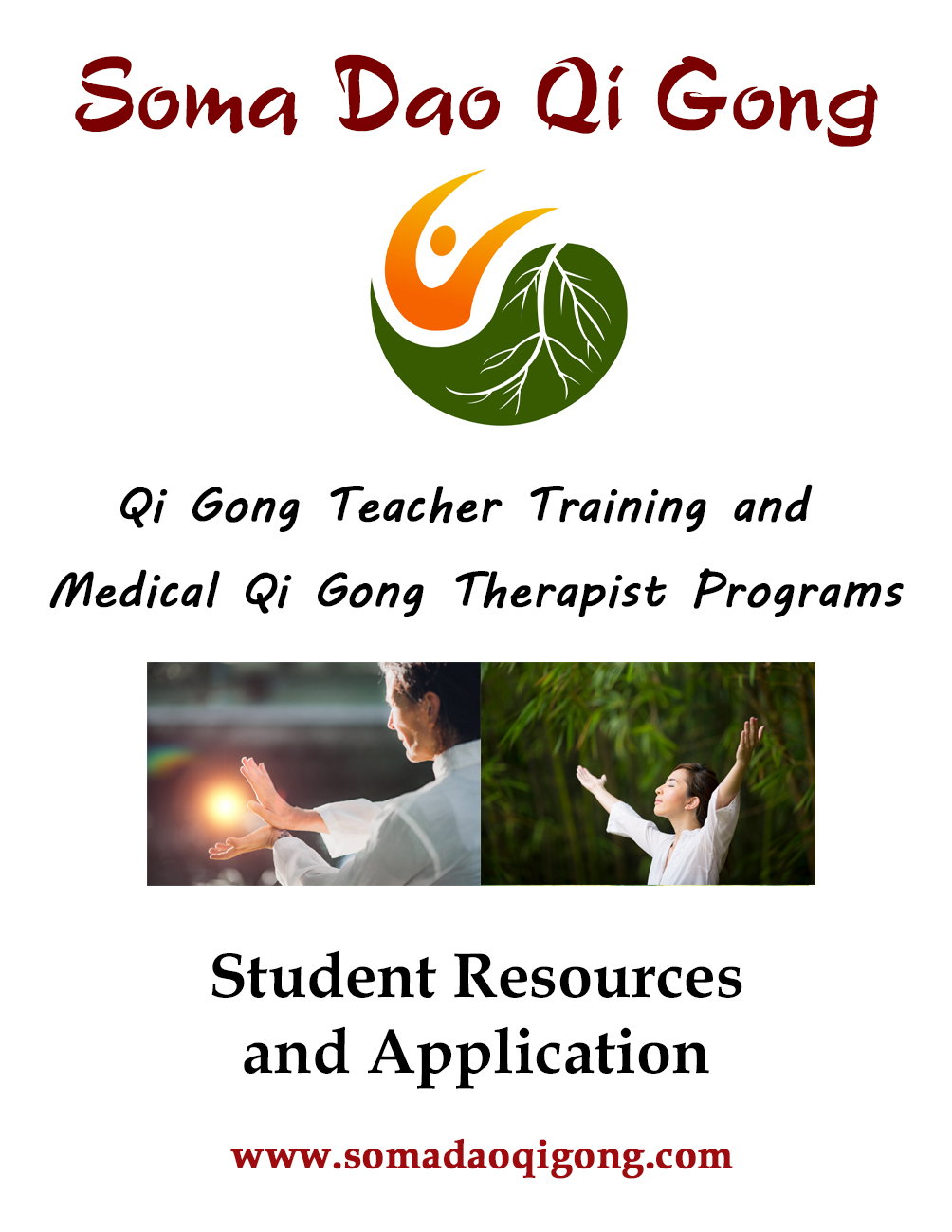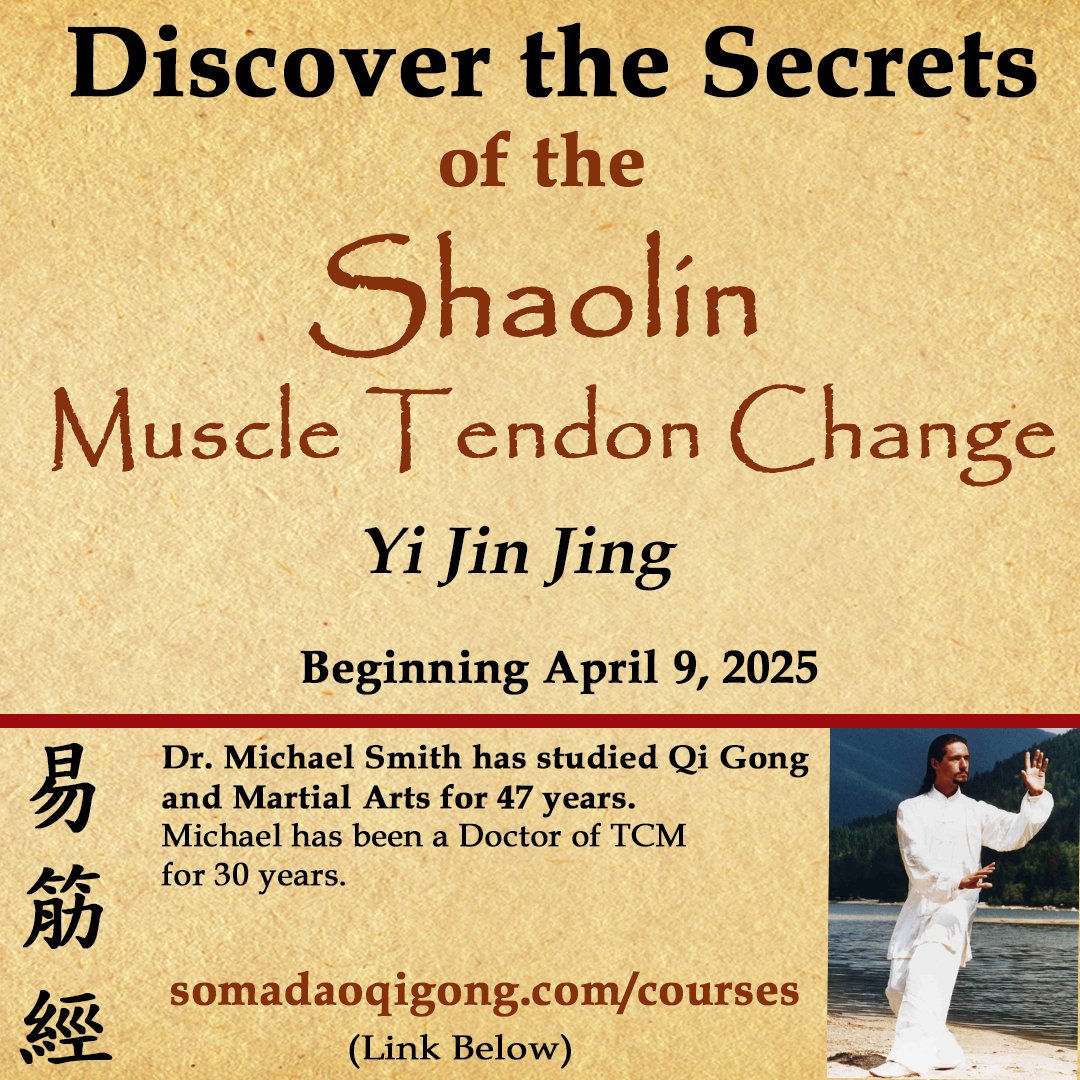The Muscle and Tendon Transformation Process
Year One of a Three Year Lineage Apprenticeship
What would the strength, agility, and speed of the world’s most famous warrior monks feel like?
Shaolin Strength and Longevity Qi Gong is a very effective and enjoyable way to strengthen your muscles, nerves, fascia, and bones, as well as ensure you do not lose your muscle mass as you age.
Did you now that sufficient lean muscle mass is the most important indicator for longevity and vitality throughout your life?
Although most Qi Gong exercises look very relaxed and effortless, they improve your fitness because they activate, stretch, and tone almost every muscle and membrane in your body.
What if Qi Gong took this reinvigorating opportunity as far as possible?
The Muscle Tendon Change (Yi Jin Jing), is possibly the most renowned form of Qi Gong in the world. Originating in the Shaolin Monastery, this combination of basic martial arts conditioning, self-healing practices, advanced inner Qi Gong training, and Chan (Zen) meditation, has been transforming lives for over 1500 years.
This system focuses on:
- Pandiculation (stretching like a cat). This natural, involuntary act of stretching helps reset the body’s nervous system, prepare it for activity, and ensure that your deeper fascia system does not become stiff, stuck, and sore. Pandiculation involves a gentle contraction followed by a slow, deliberate release of muscles, conscious breath work or yawning, which combine to restore full muscle function and length.
- Isometric and Isotonic resistance training. Exploring internally generated resistance through Isotonic (static isolated tension) and Isometric (isolated tension through a movement) is the fastest way to balance the strength, tone, and pliability in all of your skeletal muscles.
- Whole Body Fascial Tensegrity is the balance of tension and structural integrity, across all joints and axis. This is a lifelong journey and requires that you build some physical strength (see below), while also improving the range of motion in every joint of your body.
- Building lean muscle mass (the number one indicator for longevity), is the simplest way to improve almost every function in your body. It is also the best medicine for a world living in chairs, doom scrolling for ways to live better and healthier lives.
- Increases Collagen Density and Availability. Every connective tissue, organ structural fabric, bone matrix, and in fact every cell of your body, requires collagen to exist and function. The longer and more abundantly your body can produce this elixir of longevity, the longer and healthier your life will be.
- Stimulating Stem Cell and Other Precursor Cell Production. This form of training can increase many tissue precursors or Jing. By challenging your body to maximize Fascial Tensegrity and collagen stores, your body also generates more Stem Cells, Fibroblasts (collagen producing cells), and Hyaluronic Acid (HA) (necessary for pliable tissues and wrinkle free skin).
In Traditional Chinese medicine, this process is understood to be the most effective way to building Jin (connective tissue) and Jing (Essence or non-specific tissue resources). The health of your organs, your ability to repair your body in every way, and your ability to make healthy babies, and build bigger muscles is determined by the health of your Jing – your Essence. The inner Mojo ‘stuff’ that makes you feel healthy, vigorous, and invincible.
The qualities and quantities of your Jing correspond to the biological functions of all of your reproductive hormones, stress hormones, growth and repair hormones, your neurotransmitters (substances of feeling, experience, and communication), and all of your enzymes – which are literally physical tool kits that make digestion, metabolism, and molecular transformation (Qi) possible. As well, Jing is also understood to include your body’s collagen, interstitial fluids, and stem cells.
This process transforms many aspects of your tissue body and your energy body.
If you think of your Qi and Meridians like electricity and the thickness of a wire, the more abundant your ‘wires’ are the stronger the Qi you can experience.
This is especially true if you are a Martial Artist or Healer. Your meridians are made of and do many things. The vaster amount of what your meridians physically become, and what limits their function, is your muscles, tendons, blood vessels, interstitial fibers and fluids, as well as your many layers of fascia. Lengthening and strengthening all of these tissues equally and simultaneously is one of the most efficient and effective forms of Qi Gong for the health of the structural aspects of all of your meridians.
Rearranging and restoring the structure and function of all of your connective tissues and circulation, and all of your meridians is like building a city. From the ground up.
Who created this and why?
Over the last few thousand years, early Dao Yin/Qi Gong practitioners, and over the last 1500 years the Shaolin monks have dedicated their spiritual practice to both their Body (Ming) and their Being (Xing). This form of Qi Gong is the preferred method to prepare the physical body for the rigors of a daily many hour long meditation practice.
These practices are demanding and are only taught when people are ready for this degree of Mind, Body, Meridian, Jing, Connective Tissue (Jin), and Breathwork transformation.
I recommend anyone recovering from a sedentary modern life focus on improving their overall strength, tone, and pliability once a year. This is usually done in Spring, the time of your Liver, Tendons, and Assertiveness.
Traditionally, learning and attaining the complete Yi Jin Jing principles and process takes three years.
You can learn all of the tools and principles in the first year. If you choose to complete the process, you will have the guidance to complete the final two years with a group of like-minded practitioners.
Beginning 2025
I am offering a limited number of people a 3 year Lineage Apprenticeship.
Learn the Entire Yi Jin Jing System of Practice
Shaolin Yi Jin Jing - Year One
Review of Fundamental Qi Gong Principles
Review of Fundamental Qi Gong Joint Opening Exercises
Three Yi Jin Jing Forms
12 Gestures of Wei Tuo -
(Passes 1-3 for Pandiculation)
Tan Fu's External Vigor
Passes 1-6 (of 12) Isometrics
Daoist Heavy Hands
The Structure of Stillness and Release (Bone Marrow Washing)
Stone Locks (or Kettle Bells) - one
Gymitations One – Primary Muscles
Yang Sheng - Nourishing Your Tissues
Liniments and Self Massage
Pai Da One – Percussive Massage
Shaolin Yi Jin Jing - Year Two
Three Yi Jin Jing Forms
12 Gestures of Wei Tuo
(Passes 4-6 for Qi, Jin, Gu Yi Layers of Practice)
Tan Fu's External Vigor
(Passes 7-12 for Qi, Jin, Gu Yi Layers of Practice)
Daoist Heavy Hands
(Qi, Jin, Gu Yi Layers of Practice)
Shaolin Seated Wall Staring Meditation - Five Breaths of Yi Nian
Restore Your Core and Floor Work (Dian Gong)
Shaolin Tan Tui – Three Gestures for Leg Strength and Power
Stone Locks - two
Whole Body Nerve Flossing Flow (and individual nerves)
Gymitations Two – Circuit Training – Phase One and Two
Pai Da – Two – Using Bean Bags or Bamboo
Anti-Aging Protocols and Facial rejuvenation Massage
(Mobile Cupping and Gua Sha)
Clay Pot Carnivore Diet – Cookbook and Webinar
Shaolin Yi Jin Jing - Year Three
12 Gestures of Wei Tuo
(Fifth Pass - Melting Body into Stillness)
Tan Fu's External Vigor
(Jing/Gel Body and Light Body Conversion and Inversion)
Daoist Heavy Hands
(Metal to Air, Water and Soil, Mercury and Lead)
Five Animals Old and New - Pre-recorded
Yang Sheng Fa– 10 Week Cleansing, Rejuvenation, and Longevity course – Pre-recorded
Nei Gong - Meridian and Dan Tian Essentials of Nei Gong Year One
Stone Locks- Phase Three – Tabata Training
Gymitations three – Tabata Training
FREE Webinar on the History, Practice, Theory, and Physiology of the Yi Jin Jing

How is this practice taught today?
In the system that I teach, the first year focuses on learning the system, which includes three traditional forms, optimal diet, self-massage, meridian patting, stretching and joint opening (Dao Yin), appropriate Breathwork skills, resistance training (Stone Locks), and other tissue supporting aspects of Yang Sheng Fa (Methods for Nourishing Vitality).
Shaolin Yi Jin Jing – Year One Outline
- Review of Fundamental Qi Gong Principles
- Review of Fundamental Qi Gong Joint Opening Exercises
- Three Yi Jin Jing Forms
- 12 Gestures of Wei Tuo – Passes 1-3 for Pandiculation
- Tan Fu’s External Vigor – Passes 1-6 (of 12) for Isometrics
- Daoist Heavy Hands
- The Structure of Stillness and Release (Bone Marrow Washing)
- Stone Locks (or Kettle Bells) – one
- Gymitations One – Primary Muscles
- Yang Sheng – Nourishing Your Tissues
- Liniments and Self Massage
- Pai Da One – Percussive Massage
The first form that is taught is called the Twelve Gestures of Wei Tuo.
This form is often referred to as the Yi Jin Jing form. It is important to keep in mind that the Yi Jin Jing was initially taught as a series of principles and relationships that help a practitioner balance the strength, tone, and pliability of their connective tissue, or Jin (muscles, tendons, ligaments, and fascia).
This form is easy to learn and safe for most people to practice.
I teach this form as a container to ensure my students have embodied the essential aspects of this potent and somewhat demanding system of whole-body transformation. There are also many specific Qi Gong principles that are easiest to learn and master using repetitive and specifically choreographed movements.
All of your body’s connective tissues are made of layers upon layers of fascia, connected by countless filaments of micro-fascia, surrounded by interstitial fluids and stem cells. Depending on your age, your posture, your embodiment of distress and trauma, and any previous injuries, your fascia may look more like crumpled tinfoil than smooth and resilient membranes.
The initial benefit of this practice is to balance any constraint or collapse while equalizing the tension everywhere in your body. Again, Tensegrity, or the balance of tension and structural integrity, is a lifelong journey and requires that you build some physical strength, while also improving the range of motion in every joint of your body.
The second form in this system is called Tan Fu’s External Vigor Routine.
This practice involves a balance of Isotonic (static) and Isometric (small movement) muscle contractions, while dedicating a lot of awareness to structure, balance, and breath.
This practice can be used to build larger, faster, and much more powerful muscles and membranes. It can also be used to tone the same tissues while correcting years of poor posture and embodied holding patterns. You do not need to build muscle mass if that is not your goal. Those modifications will be discussed at the appropriate time during the training.
As you learn and employ these changes to your strength and tone, you will also learn to restore your core. It is always important to remember that you are only as strong as your core is engaged and matches the strength of your limbs.
There is no Tensegrity without your core!
Another way that the ancient Shaolin monks would ensure that they had a balance of strength and flexibility was by ‘juggling’ Stone Locks. Imagine a square-looking kettle bell. You will also learn a whole-body circuit training routine using kettle bells.
Depending on your circumstances and goals, you can choose minimal or moderate weight during this process.
After several months of improving, refining, and balancing the strength, tone and pliability of all of your connective tissues (Jin), as well as building your Jing (Essence), it will be time to go even deeper.
The next step is to learn a subtle process called Bone Marrow Washing. This aspect of the Yi Jin Jing practice is also a series of principles and interactions, most often practiced in the Winter.
The third form in this system is called Daoist Heavy Hands.
This form is often used by martial artists to develop Iron Palm and Iron Body skills. This form can also be used, standing or seated, to cultivate your Bone Marrow Washing (Xi Sui Jing) skills.
In TCM, it is understood that you may lose your Body’s Jing over time. First, you tap into your sexual or reproductive Jing, then your Bone Marrow, and finally, your Brain. Your Brain and Marrow are often referred to as the Sea (resource) of Jing.
The Bone Marrow Washing practices are meant to gradually reverse (or slow) this process.
The Yi Jin Jing process is a form of Physical Alchemy.
You begin by rearranging how Yang (physical effort) reconfigures the structure and function of your Jin (contractile connective tissue). This also refines and augments your Jing – which can lead to many long-term advantages in your life. Eventually, you must become a student of Yin, of receiving and storing the abundance of Jing that can now ‘seep’ back into your Marrow and Brain.
Bridges and Passes
In this approach to the Yi Jin Jing process, there are Eight Bridges. Think of each Bridge as the floors of a building. You have to go through each floor before you can go up the stairs to the next floor.
In many traditional Qi Gong lineages, each exercise, skill, or form is taught in Passes. This made learning consistent and sequential, which also helped new teachers share the tradition, while also keeping the traditional methods alive.

Throughout the history of Chinese martial arts, and even today, some lineages still hold to only teaching the general public the outer Passes. These people are considered to be ‘outside the door’ (not in the family). The inner Passes were, and often still are, only taught to those who are invited to become disciples and potentially carry the lineage forward into the next generations.
In this very in-depth course, there are many Passes to each form, each principle, and each skill. This will help you learn step-by-step, and continue your training with a very clear checklist of how to organize your practice.
If you are a teacher or learning to become one, teaching the old way has worked for a very long time.
I have come to believe that it is no longer necessary for there to be hidden knowledge.
Yi Jin Jing – Year One – The Eight Bridges
First Bridge - Shaolin Yi Jin Jing
Webinar One – History, Theory, Modern Anatomy, Traditional Practice and the Yi Jin Jing Process.
“The Process of Connective Tissue Transformation and Fascial Tensegrity”
Class One – Learning the Yi Jin Jing System
Class Two – Structure, Coordination, and Efficiency
Class Three – Learning to Breathe All Over Again
Class Four – Stone Locks and Circuit Training
When you cross this bridge you will boost your Jing and Qi, increase your mitochondria and metabolic rate, as well as balance your blood sugar and stress hormones. You will also learn:
- the modern Yi Jin Jing form (also known as The Twelve Gestures of Wei Tuo),
- the Shaolin Strength Training form (known as Tan Fu’s External Vigour Routine),
- and a Shaolin Circuit Training sequence using Stone Locks (Shi Suo 石锁) or Kettlebells.
This process is demanding on all of your resources, so pay attention to your recovery time. There is no reason to overdo anything, but if you do and feel sore for too many days, you may want to see a clinician and see if anything is functioning poorly.
Second Bridge - Yang Sheng Fa – Nourishing Your Connective Tissue for Longevity
Webinar Two – Fu Zheng Qu Xie – The Dos and Don’ts of Restoring Your Entire Body
Class Five – Completing the Forms
Class Six – Meeting Your Muscles – Learning the forms from the inside.
Class Seven – Dao Yin – Releasing your Muscles with Progressive Relaxation
When you cross this bridge you will learn the complete Yi Jin Jing (up to the Third Pass) and External Vigor forms (up to the Ninth Pass), become internally connected to your major muscles and muscle groups, while becoming aware of the best ways to support your practice with a nutrient-dense diet, a few supplements, some liniment (eventually homemade), and hopefully some regular massage.
You will also have a unique opportunity to learn Dao Yin, or the Original Qi Gong system. Like the Yi Jin Jing, Dao Yin is an expression of a series of principles, interactions, and progressions.
Third Bridge - Fang Song – Balancing Tone and Pliability
Webinar Three – Pore Breathing and Your Infinite Membranes
Class Eight – Dian Gong – Floor Work and Your Five Spines
Class Nine – Unwinding Into Contraction
Class Ten – Drunken Kelp and the Oceans of Dao
When you cross this bridge you will begin the Nei Gong (Inner Cultivation) aspects of Yi Jin Jing practice.
As your muscles become stronger and hold more natural postural tone, they will also need some gentle, gradual, and consistent pliability and tensegrity training. Qi Gong is almost always more interested in whole-body pliability, elasticity, and agility than it is in simple mechanical flexibility. Learning to ‘stretch’ without striating your many layers of fascia is a fundamental principle in Yi Jin Jing practice.
Finally, this Bridge also asks you to release your connective tissue completely into an expression of your Jing (Essence), your emotions, your Spirit, your Inborn Aliveness (Ming), and your Inner Nature (Xing).
Fourth Bridge - Restore Your Core and Strengthen Your Mitochondria
Webinar Four – Core Connections and Circuit Training
Class Eleven – The Eight Positions of Core Agility and Tone
Class Twelve – Stone Locks, Kettle Bells, and Whole Body Strength
Class Thirteen – Joint Opening and Nerve Flossing
When you cross this Bridge, you will be intimately aware of the complex system of joints, muscles, and diaphragms referred to as your Core. There are many more interesting, effective, and functional things to experience with your core tone than just six-pack abs.
It could be said that you can only be as strong as you can engage your core. The best way to wake up your connective tissue, throughout your whole body is called circuit training. Using moderate hand-held weights, your body can explore resistance, momentum, structural integrity, and balance, while increasing your muscle mitochondria, and the ability of your body to move and conduct more Qi.
One of the subtle benefits of the Yi Jin Jing practice is opening your joints and physically mobilizing and lengthening your major nerves. This practice generates a unique Growth Factor for nerve and brain growth and repair.
From a TCM and Daoist perspective, this suggests storing Jing in your muscles, membranes (as collagen and stem cells) nerves, spine, and brain – which are the Sea of Bone Marrow and Jing.
Fifth Bridge - Bone Density and Marrow Cleansing
Webinar Five – Bone Density and Marrow Cleansing
Class Fourteen – Daoist Heavy Hands Nei Gong – Bone Opening and Closing
Class Fifteen – Meridian Patting and Percussion
Class Sixteen – Lateral and Seated Practices
When you cross this bridge you will learn the powerful Daoist Heavy Hands Bone Density and Marrow Packing form, and begin the gentle and subtle art of Bone Opening and Closing.
You will also learn to massage your tissues, break up Qi and Blood Stagnation with bamboo or metal, and continue to expand the dimensions of the Yi Jin Jing form.
Sixth Bridge - Torsion and Wrapping (Ni and Shun)
Class Sixteen – Spiraling Open and Closed
Class Seventeen – Opening Left, Closing Right
After crossing the first five Bridges, you will be comfortable practicing three traditional forms, the Yi Jin Jing form, the External Vigor form, and the Daoist Heavy Hands form; and you will learn about and become tangibly aware of your Inner Landscape (Nei Jing), your structural Anatomy, the difference between tension and tone, and the difference between flexibility and pliability.
When you cross the Sixth Bridge, you will enter the process called Fascial Tensegrity, which is the complete reorientation and recalibration of all of your connective tissues and the elastic and contractile rhythms within your meridians
Seventh Bridge - Bone Breathing and Marrow Packing
Webinar Six – Shaolin Nei Gong and Breathwork
Class Eighteen – Gu Fen – Practicing your three forms, freeing your bones, bone breathing, and spontaneous percussion.
Class Nineteen – Seated Heavy Hands, Bone Marrow Packing, and Nei Gong
When you cross this bridge your Inner Landscape will find tensegrity through ever-reaching bones with infinite layers of membranes and filaments, giving it shape and movement. This allows your Shen (Spirit) and Jing (Essense/Mojo) to come into a collaborative state of Aliveness, which is the gateway to longevity and deeper levels of Nei Gong (Inner Cultivation) practice.
At this level of Coherence or Jing, Qi, and Shen union and flow,
you can begin the process of returning your Jing to your Bones and Marrow.
Eighth Bridge -A Complete Yi Jin Jing System of Practice
Final Webinar: Completion Ceremony and Initiation for Second Year Commitment
Class Twenty – Review of Practices and Principles
Class Twenty-One – Shaolin Chan/Zen Meditation
When you cross this bridge you will have the necessary experience to complete the three-year process of completing Yi Jin Jin, which requires regular Qi Gong practice and 100 days of dedicated practice of the forms and principles in this system.
If you begin restoring your Jing, you will need to have a seated meditation practice to keep your Shen and Qi Anchored and grounded. The Shaolin Chan or Zen practice is easy to learn and can fit into any other practice, even standing, walking, and lying down.
As a closing ceremony, we will practice and share stories about our experiences together.
One Year Yi Jin Jing Lineage Apprenticeship
April 9, 2025
Shaolin Strength and Longevity Qi Gong (Yi Jin Jing)
Learn the skills, practices, and principles of the complete Yi Jin Jing system.
$2247
$1497
The Yi Jin Jing practice can improve many aspects of your life!
Each of the Eight Bridges (above) can support your personal health and your ability to support others.
If you are a clinician, therapist, teacher, or another kind of health care professional or coach, or an experienced Qi Gong or Martial Arts practitioner, this 8-month journey of improving the strength, tone, and elasticity of all of your connective tissue will give you some unique and ancient resources. For the rest of your life.
Join this rare opportunity to learn authentic Shaolin Qi Gong and expand your horizons, on the inside and out.

I am interested in learning more about becoming a Qi Gong Teacher and/or study advanced Qi Gong in a traditional lineage and would like to receive your newsletter.
YES! Send me a copy of the Student Resource Guide
(We respect your privacy)
